Meet The White-Winged Fairy-Wren, A Glistening Feathered Jewel, Dazzling Like A Bright Blue Sapphire
Meet the birds that are so adorable, they look like brilliant jewels when in flight.

Australia's White-winged Fairy-wrens are known for their bright-colored, striking appearance. The males are generally fully bright-cobalt blue, but their wings, as seen from their name, are colored white.
This is true for most of the species, which expands across most of mainland Australia's inland regions and semi-dry coastlines. As for the males of Dirk Hartog and Barrow islands (located off north-western Australia), they're inky black, instead, with white wings like their deep blue-colored counterparts.
The White-winged Fairy-wrens can be seen in low shrubland, around arid and semi-arid places. You can see them in chenopod shrublands and samphire or saltpans.
These birds stay in a single area. But outside their breeding season, they may be nomadic.
The White-winged Fairy-wrens' diet consists of insects, spiders, and seeds. They typically love eating beetles.
The seeds they eat include saltbushes, spurges, and purslanes. With their small size, they can extract from stems and leaves of thick shrubs.
When they are on the ground, they hop to search for food. If insects are flying around, they will briefly charge through the air to catch them.
If you're interested in seeing the beauty of these jewel-like birds, you're in luck. We have compiled pictures of these beautiful, brilliant birds for you to enjoy.
This is the White-winged Fairy-wren (Malurus leucopterus).
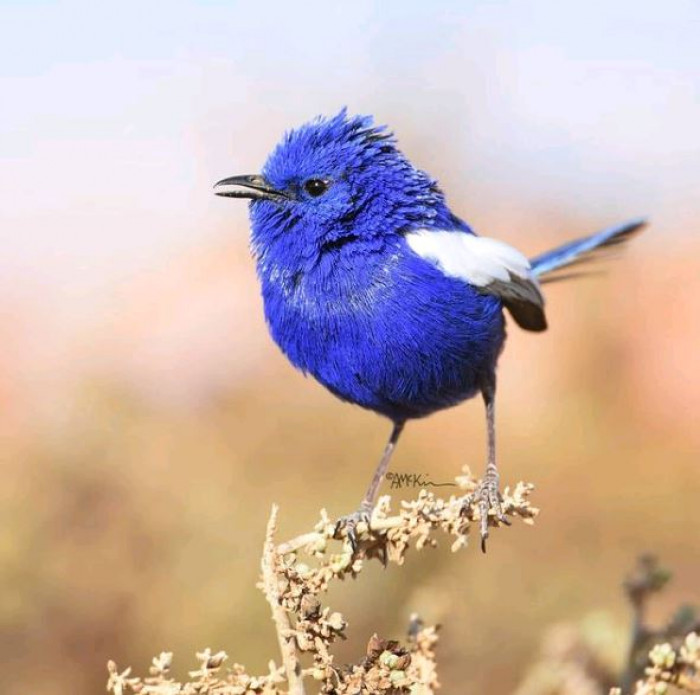 Instagram/gusses_gallery
Instagram/gusses_galleryThe females look different, though.
Their feathers are mostly dull grey-brown colored, and their back and the outline of their wings are grey with a small hint of blue. Younger males that have sexually developed look almost the same as the female White-winged Fairy-wrens.
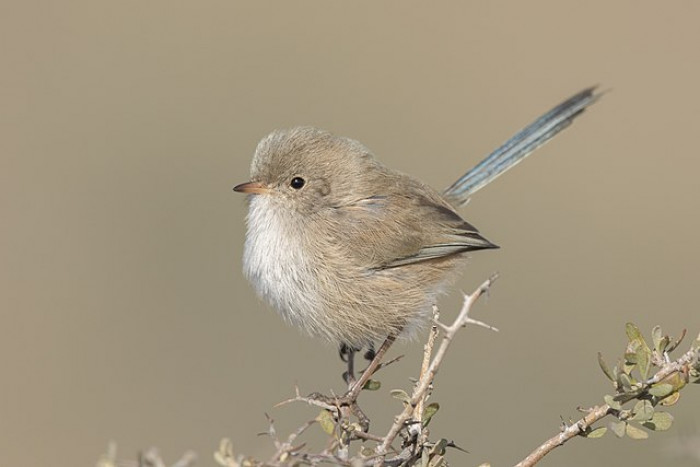 Andreas Trepte / CC BY-SA 4.0
Andreas Trepte / CC BY-SA 4.0Socially they are monogamous. But sexually, they are promiscuous.
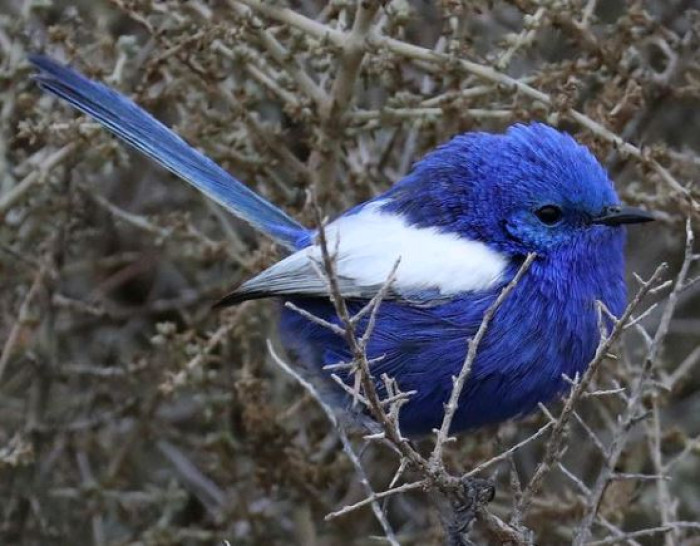 Instagram/birdsnfishes
Instagram/birdsnfishesThey are communal breeders and seem like they live in groups.
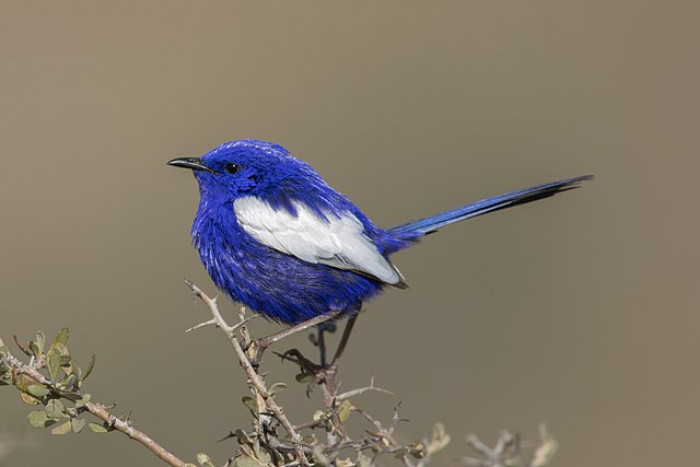 Andreas Trepte / CC BY-SA 4.0
Andreas Trepte / CC BY-SA 4.0Their nests are created by the females.
The structure has a dome-like shape that measures 10 x 6 cm. It comes with an entrance at the side.
 Instagram/ricky_goodyear_photography
Instagram/ricky_goodyear_photographyTheir nests consist of fine grasses. They are lined with feathers and plant down.
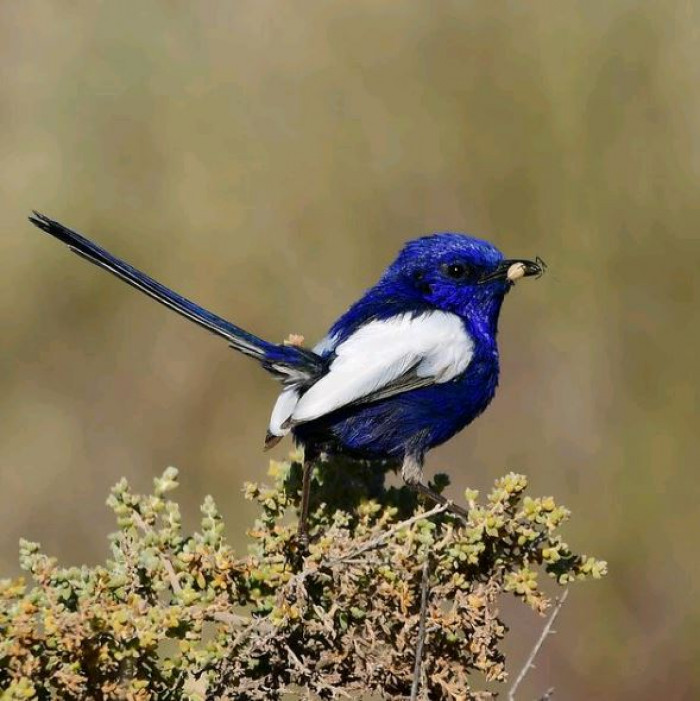 Instagram/stumilde_photography
Instagram/stumilde_photographyNests are typically built 1 meter above the ground.
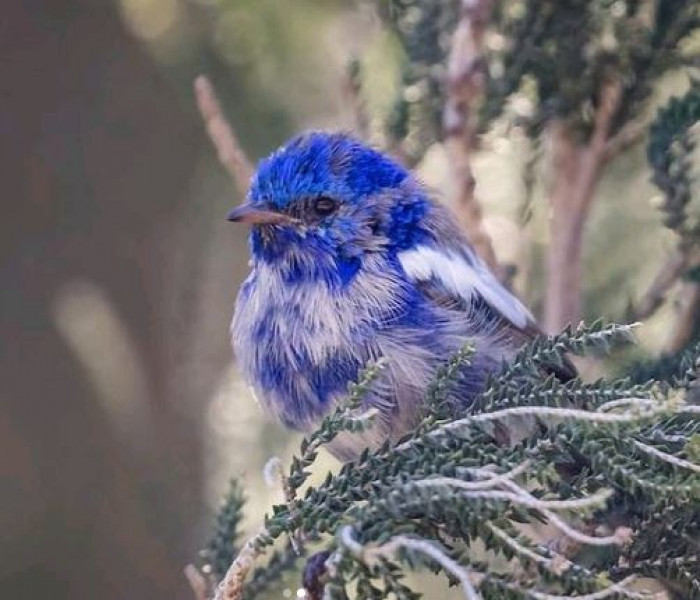 Instagram/taylormademoments77
Instagram/taylormademoments77Females will build them amidst a thick, thorny bush. They are the ones who incubate the eggs.
As for the rest of the group, they will feed the chicks generally around four weeks. The fledged babies will still be part of the group.
Sadly, the number of these bright and beautiful creatures is declining. The habitat destruction caused by us, humans, has a negative impact on their population.
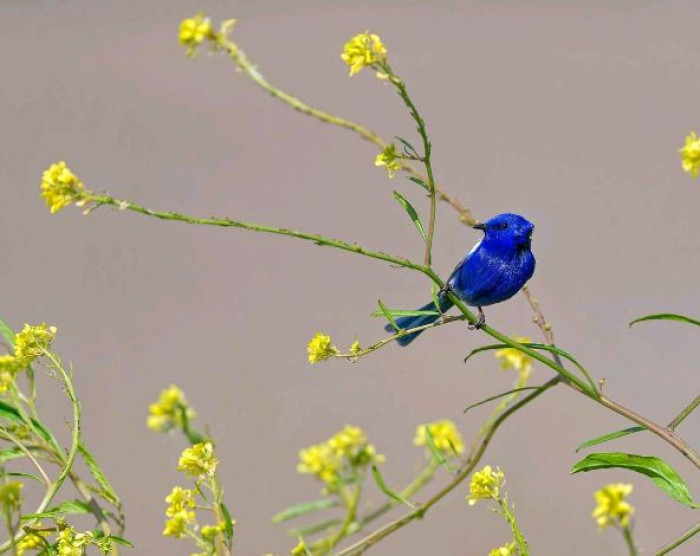 Instagram/dean_rule_nature
Instagram/dean_rule_natureWant to listen how they sing? Check out the video below.
Scientists determined five calling patterns from these species. Their main vocalization is the reel, which is used by both males and females to unify the group and settle the territory.
How does their population get affected?
In New South Wales, their habitat gets destroyed during the clearing of lignum thickets and chenopod shrublands in repeatedly flooded bodies of water. In the Murray-Mallee, humans clear the native vegetation.
Burning their habitat also has short-term adverse effects on their population. Aside from habitat destruction, mammalian predators naturally affect their numbers.
Red foxes and feral cats are among the animals that prey on these birds. Predatory birds are another threat to the White-winged Fairy-wrens.

